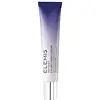What's inside
What's inside
 Key Ingredients
Key Ingredients

 Benefits
Benefits

 Concerns
Concerns

 Ingredients Side-by-side
Ingredients Side-by-side

Water
Skin ConditioningGlycerin
HumectantCoco-Caprylate
EmollientCocos Nucifera Oil
MaskingGlyceryl Oleate Citrate
EmulsifyingBuglossoides Arvensis Seed Oil
EmollientBellis Perennis Flower Extract
Skin ConditioningHieracium Pilosella Extract
MaskingMica
Cosmetic ColorantSimmondsia Chinensis Seed Oil
EmollientPanthenol
Skin ConditioningAcrylates/C10-30 Alkyl Acrylate Crosspolymer
Emulsion StabilisingHydroxyacetophenone
AntioxidantPhenoxyethanol
PreservativeXanthan Gum
EmulsifyingTocopherol
AntioxidantPerilla Ocymoides Seed Oil
Skin ConditioningSodium Hydroxide
BufferingTocopheryl Acetate
AntioxidantDisodium EDTA
Sodium Citrate
BufferingCitric Acid
BufferingSodium Benzoate
MaskingMatthiola Longipetala Seed Oil
EmollientSodium Dehydroacetate
PreservativeHydrolyzed Yeast Protein
Skin ConditioningWater, Glycerin, Coco-Caprylate, Cocos Nucifera Oil, Glyceryl Oleate Citrate, Buglossoides Arvensis Seed Oil, Bellis Perennis Flower Extract, Hieracium Pilosella Extract, Mica, Simmondsia Chinensis Seed Oil, Panthenol, Acrylates/C10-30 Alkyl Acrylate Crosspolymer, Hydroxyacetophenone, Phenoxyethanol, Xanthan Gum, Tocopherol, Perilla Ocymoides Seed Oil, Sodium Hydroxide, Tocopheryl Acetate, Disodium EDTA, Sodium Citrate, Citric Acid, Sodium Benzoate, Matthiola Longipetala Seed Oil, Sodium Dehydroacetate, Hydrolyzed Yeast Protein
Caprylic/Capric Triglyceride
MaskingGlycerin
HumectantWater
Skin ConditioningPolyglyceryl-3 Methylglucose Distearate
EmulsifyingPolysorbate 80
EmulsifyingCetearyl Olivate
Sorbitan Olivate
EmulsifyingHydroxyacetophenone
AntioxidantPhenoxyethanol
PreservativeAcrylates/Beheneth-25 Methacrylate Copolymer
Mangifera Indica Seed Butter
Skin ConditioningSalvia Hispanica Seed Oil
MoisturisingLactobacillus/Acerola Cherry Ferment
Skin ProtectingLactobacillus/Pumpkin Fruit Ferment Filtrate
Skin ConditioningSaccharomyces/Rice Ferment Filtrate
Skin ConditioningCamellia Sinensis Seed Oil
HumectantCandida Bombicola/Glucose/Methyl Rapeseedate Ferment
AntimicrobialSodium Hydroxide
BufferingHelianthus Annuus Seed Oil
EmollientBeta-Carotene
Skin ConditioningCapsanthin/Capsorubin
Cosmetic ColorantButylene Glycol
HumectantTocopherol
AntioxidantLeuconostoc/Radish Root Ferment Filtrate
AntimicrobialOlea Europaea Fruit Oil
Masking1,2-Hexanediol
Skin ConditioningPolyglyceryl-3 Diisostearate
EmulsifyingAscorbyl Palmitate
AntioxidantRosmarinus Officinalis Leaf Extract
AntimicrobialAscorbic Acid
AntioxidantCaprylic/Capric Triglyceride, Glycerin, Water, Polyglyceryl-3 Methylglucose Distearate, Polysorbate 80, Cetearyl Olivate, Sorbitan Olivate, Hydroxyacetophenone, Phenoxyethanol, Acrylates/Beheneth-25 Methacrylate Copolymer, Mangifera Indica Seed Butter, Salvia Hispanica Seed Oil, Lactobacillus/Acerola Cherry Ferment, Lactobacillus/Pumpkin Fruit Ferment Filtrate, Saccharomyces/Rice Ferment Filtrate, Camellia Sinensis Seed Oil, Candida Bombicola/Glucose/Methyl Rapeseedate Ferment, Sodium Hydroxide, Helianthus Annuus Seed Oil, Beta-Carotene, Capsanthin/Capsorubin, Butylene Glycol, Tocopherol, Leuconostoc/Radish Root Ferment Filtrate, Olea Europaea Fruit Oil, 1,2-Hexanediol, Polyglyceryl-3 Diisostearate, Ascorbyl Palmitate, Rosmarinus Officinalis Leaf Extract, Ascorbic Acid
 Reviews
Reviews

Ingredients Explained
These ingredients are found in both products.
Ingredients higher up in an ingredient list are typically present in a larger amount.
Glycerin is already naturally found in your skin. It helps moisturize and protect your skin.
A study from 2016 found glycerin to be more effective as a humectant than AHAs and hyaluronic acid.
As a humectant, it helps the skin stay hydrated by pulling moisture to your skin. The low molecular weight of glycerin allows it to pull moisture into the deeper layers of your skin.
Hydrated skin improves your skin barrier; Your skin barrier helps protect against irritants and bacteria.
Glycerin has also been found to have antimicrobial and antiviral properties. Due to these properties, glycerin is often used in wound and burn treatments.
In cosmetics, glycerin is usually derived from plants such as soybean or palm. However, it can also be sourced from animals, such as tallow or animal fat.
This ingredient is organic, colorless, odorless, and non-toxic.
Glycerin is the name for this ingredient in American English. British English uses Glycerol/Glycerine.
Learn more about GlycerinHydroxyacetophenone is antioxidant with skin conditioning and soothing properties. It also boosts the efficiency of preservatives.
This ingredient is not irritating or sensitizing.
Phenoxyethanol is a preservative that has germicide, antimicrobial, and aromatic properties. Studies show that phenoxyethanol can prevent microbial growth. By itself, it has a scent that is similar to that of a rose.
It's often used in formulations along with Caprylyl Glycol to preserve the shelf life of products.
Sodium Hydroxide is also known as lye or caustic soda. It is used to adjust the pH of products; many ingredients require a specific pH to be effective.
In small amounts, sodium hydroxide is considered safe to use. However, large amounts may cause chemical burns due to its high alkaline.
Your skin has a natural pH and acid mantle. This acid mantle helps prevent harmful bacteria from breaking through. The acid mantle also helps keep your skin hydrated.
"Alkaline" refers to a high pH level. A low pH level would be considered acidic.
Learn more about Sodium HydroxideTocopherol (also known as Vitamin E) is a common antioxidant used to help protect the skin from free-radicals and strengthen the skin barrier. It's also fat soluble - this means our skin is great at absorbing it.
Vitamin E also helps keep your natural skin lipids healthy. Your lipid skin barrier naturally consists of lipids, ceramides, and fatty acids. Vitamin E offers extra protection for your skin’s lipid barrier, keeping your skin healthy and nourished.
Another benefit is a bit of UV protection. Vitamin E helps reduce the damage caused by UVB rays. (It should not replace your sunscreen). Combining it with Vitamin C can decrease sunburned cells and hyperpigmentation after UV exposure.
You might have noticed Vitamin E + C often paired together. This is because it is great at stabilizing Vitamin C. Using the two together helps increase the effectiveness of both ingredients.
There are often claims that Vitamin E can reduce/prevent scarring, but these claims haven't been confirmed by scientific research.
Learn more about TocopherolWater. It's the most common cosmetic ingredient of all. You'll usually see it at the top of ingredient lists, meaning that it makes up the largest part of the product.
So why is it so popular? Water most often acts as a solvent - this means that it helps dissolve other ingredients into the formulation.
You'll also recognize water as that liquid we all need to stay alive. If you see this, drink a glass of water. Stay hydrated!
Learn more about Water